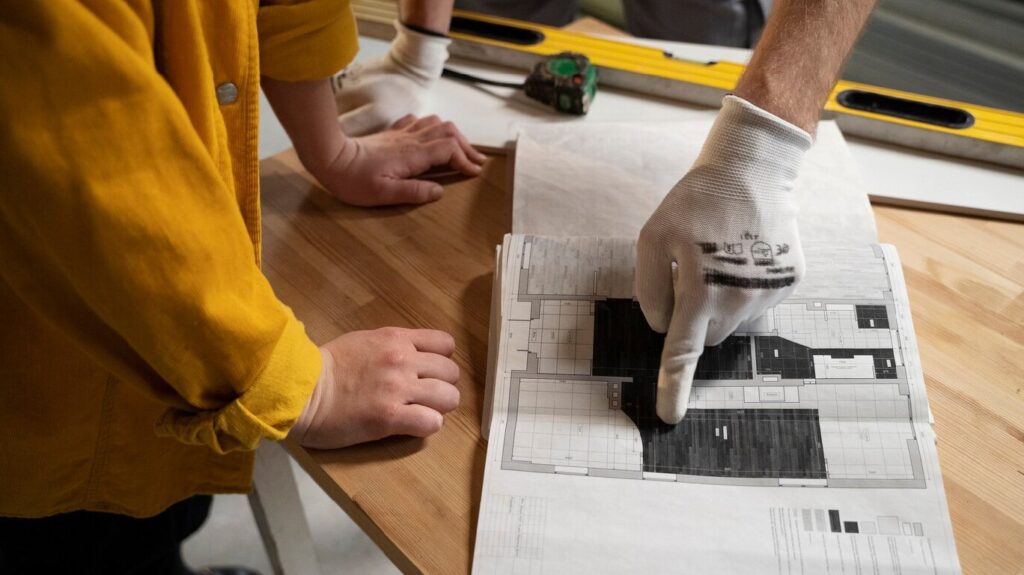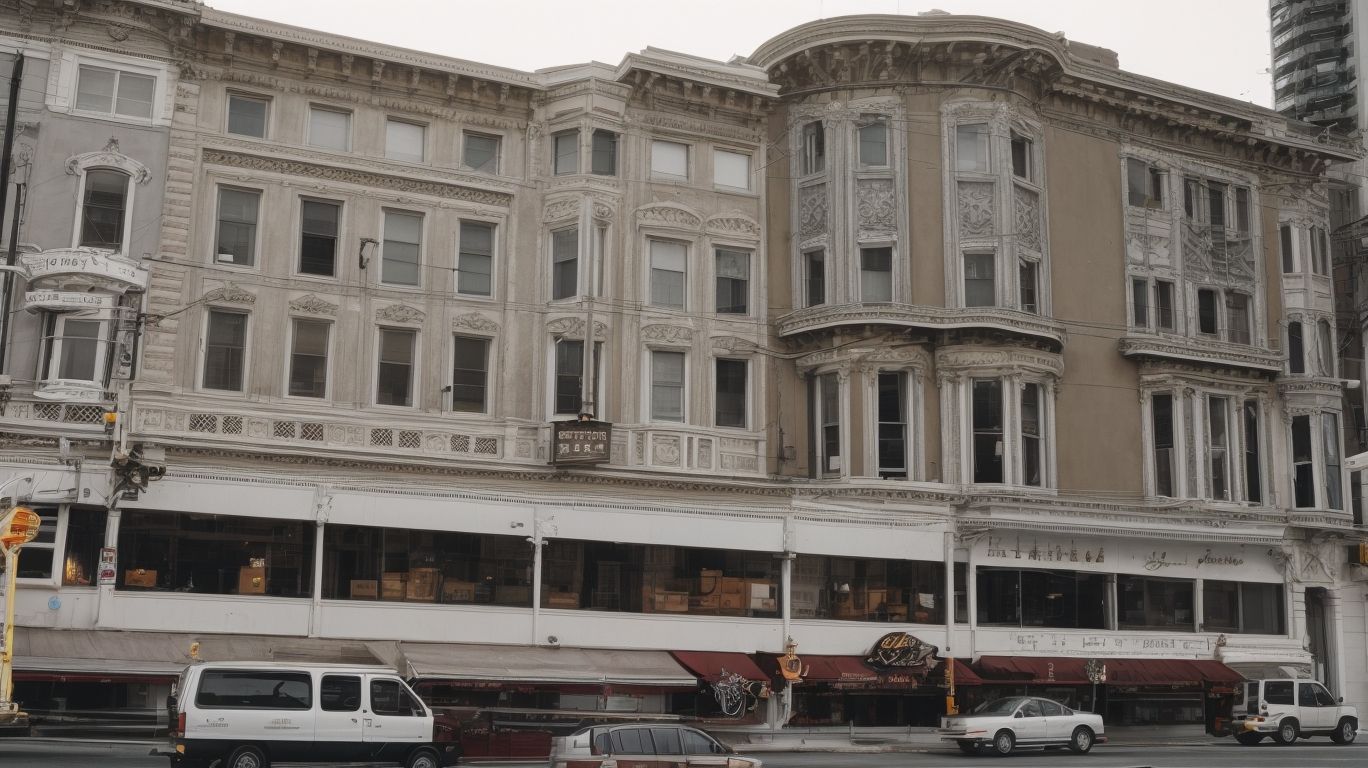
Step-by-Step Guide to Soft-Story Retrofitting in San Francisco
Soft-story buildings are a common sight in San Francisco, but their structural vulnerability in the event of an earthquake poses a significant risk to residents and property.
In this comprehensive guide, we will explore the importance of soft-story retrofitting, the legal requirements for retrofitting in San Francisco, and the different techniques available for strengthening these buildings.
Whether you’re a property owner or a concerned citizen, understanding the process of soft-story retrofitting is crucial for ensuring the safety and resilience of our city. Join us as we delve into this essential topic.
What Is Soft-Story Retrofitting?
Soft-story retrofitting is a vital process in San Francisco aimed at enhancing the seismic resilience of buildings, particularly those with soft-story construction, through structural modifications and reinforcements.
This targeted approach addresses the vulnerability of older buildings with open parking or commercial spaces on the ground floor, which are susceptible to collapse during a seismic event.
Soft-story retrofitting serves as a crucial preventive measure, as it not only protects lives and property but also ensures the uninterrupted functioning of essential infrastructure following earthquakes. In San Francisco, where seismic activity is a constant concern, this approach plays a pivotal role in fortifying the city’s built environment against potential seismic hazards, contributing to overall community safety and resilience.
What Is a Soft-Story Building?
A soft-story building is characterized by a weaker ground floor, often resulting from open spaces for parking or commercial areas, making it susceptible to seismic hazards and structural instability during earthquakes.
Soft-story buildings are known for their lack of lateral support, making them vulnerable to seismic activity. This is due to their construction, which often includes a flexible wood or steel frame on the lower floors. As a result, these buildings are at risk for significant damage or collapse during earthquakes.
The potential hazards faced by soft-story buildings during seismic events are numerous. These include a higher chance of disproportionate damage and the potential for structural failure, which poses a significant risk to both occupants and neighboring structures.
Why Is Soft-Story Retrofitting Important in San Francisco?
Soft-story retrofitting holds paramount importance in San Francisco as it significantly enhances building safety and contributes to comprehensive seismic retrofitting efforts, minimizing the risk of structural failure during earthquakes.
This is especially crucial in a city like San Francisco, which is located in a seismically active region. The vulnerability of soft-story buildings to seismic events has been well-documented, making retrofitting an essential proactive measure.
By strengthening these buildings, potential risks to occupants and adjacent structures are greatly reduced. Widespread implementation of soft-story retrofitting plays a vital role in bolstering the overall resilience of the city’s infrastructure in the face of seismic hazards.
What Are the Risks of Not Retrofitting?
Not retrofitting a soft-story building poses severe risks, including heightened seismic vulnerability, increased earthquake risk, and a lack of essential building resilience measures, potentially leading to catastrophic structural damage during seismic events.
Buildings that have not been retrofitted are at a higher risk of collapsing or sustaining severe damage, which can put occupants’ lives in danger and cause widespread destruction. Without structural reinforcement, the consequences can be devastating, posing a threat to public safety and economic stability in affected communities.
Furthermore, the lack of proactive measures increases the potential for long-term displacement and financial burden on property owners and residents. Therefore, it is crucial to address these risks through effective retrofitting initiatives to mitigate the impact of seismic events on vulnerable structures.
What Are the Legal Requirements for Soft-Story Retrofitting in San Francisco?
The legal requirements for soft-story retrofitting in San Francisco encompass adherence to specific building codes, a structured permitting process, and compliance with retrofitting regulations mandated by local authorities to ensure the structural integrity and safety of buildings.
San Francisco is located in an earthquake-prone region, making it crucial for property owners and developers to adhere to regulations aimed at addressing the vulnerability of soft-story buildings to seismic events. Familiarizing oneself with the seismic retrofit requirements outlined in the San Francisco Building Code is essential. This code outlines the standards for assessing structural vulnerability and implementing necessary retrofit measures.
The permitting process involves submitting detailed engineering plans and obtaining approvals from the Department of Building Inspection. This ensures that the retrofitting work meets the city’s safety standards.
In addition to the technical aspects, property owners must also consider the financial implications of retrofitting. This includes exploring potential funding options and incentives available to support compliance with the regulations.
How to Determine If Your Building Needs Retrofitting?
Assessing the need for retrofitting involves conducting a comprehensive seismic evaluation, performing a thorough retrofitting assessment, and evaluating the structural integrity of the building to identify vulnerabilities and determine the necessity for retrofitting measures.
By examining the building’s response to seismic activity, engineers can assess its ability to withstand potential earthquakes, ensuring that the retrofitting measures are tailored to address specific weaknesses.
Retrofitting assessments involve scrutinizing the building’s structural components, such as beams, columns, and connections, to determine their adequacy and identify areas requiring reinforcement. The assessment of structural integrity delves into the overall stability and load-bearing capacity, helping to prioritize retrofitting efforts and maintain the building’s resilience in the face of seismic events.
What Are the Signs of a Soft-Story Building?
Identifying the signs of a soft-story building involves recognizing vulnerable structural characteristics, conducting meticulous building inspections, and assessing seismic vulnerability to pinpoint potential soft-story constructions in need of retrofitting.
Structural vulnerabilities, such as weak ground floors, open parking spaces, and inadequate lateral support, can put buildings at risk during seismic events. Building inspections are vital for identifying these weaknesses and determining the level of seismic vulnerability. This information is crucial for prioritizing retrofitting efforts and ensuring the safety of occupants and the community.
How to Conduct a Soft-Story Retrofitting Evaluation?
Conducting a soft-story retrofitting evaluation entails establishing a construction timeline, estimating retrofitting costs, and formulating a comprehensive seismic retrofitting design to systematically address the specific requirements of the retrofitting process.
This evaluation involves conducting a thorough structural assessment to identify the vulnerabilities of the soft-story building.
After assessing the structural integrity, a detailed construction timeline is created to outline the various stages of the retrofitting process.
Cost estimation is then carried out, taking into account materials, labor, and any additional engineering or architectural support required.
The development of seismic retrofitting designs involves engineering expertise to ensure that the retrofitting strategy aligns with building codes and standards, ultimately enhancing the building’s resilience to seismic events.
How to Prepare for Soft-Story Retrofitting?
Preparing for soft-story retrofitting involves acquiring necessary retrofitting permits, engaging the expertise of a structural engineer, and securing retrofitting approvals to initiate the comprehensive retrofitting process.
Once the permits are secured, the structural engineer begins by conducting a thorough assessment of the building’s structural integrity to devise a tailored retrofitting plan that meets safety standards.
This step is crucial as it ensures that the retrofitting process is tailored to address any vulnerabilities specific to the building. Subsequently, collaboration with the local authorities for acquiring retrofitting approvals is imperative to proceed with the retrofits in compliance with regulations and codes.
What Are the Steps to Prepare for Retrofitting?
The steps to prepare for retrofitting include assessing the need for foundation reinforcement, engaging retrofitting professionals, and seeking recommendations from experts to facilitate the preparatory phase for the retrofitting process.
When it comes to determining the necessary foundation reinforcement for a building, understanding its structural integrity is crucial. This assessment is a crucial step in the process, as it sets the foundation for the necessary structural modifications.
Seeking recommendations from expert engineers and construction specialists is imperative to ensure that the preparatory phase aligns with the specific needs of the building. This strategic approach sets the stage for a successful retrofitting process.
What Permits and Approvals Are Needed?
The process of obtaining permits and approvals for retrofitting involves navigating the permitting process, ensuring compliance with regulations, and obtaining authorizations from local authorities. This is a crucial step in any retrofitting project, and it is essential to secure the necessary approvals from the local building department before beginning any work.
These permits typically cover structural alterations, electrical work, plumbing modifications, and fire safety upgrades. It is vital to comply with building codes and regulations to ensure that the retrofitting work meets all safety and structural standards. Local authorities and regulatory bodies oversee and approve retrofitting projects, highlighting the importance of obtaining proper authorizations before starting any work.
What Are the Different Soft-Story Retrofitting Techniques?
Various soft-story retrofitting techniques encompass steel moment frames, concrete tilt-up retrofitting, shear wall retrofitting, braced frames retrofitting, and cantilever column retrofitting, each tailored to address specific structural requirements and achieve seismic strengthening.
Steel moment frames, for instance, strengthen the existing structure by adding steel beams and columns.
Concrete tilt-up retrofitting involves incorporating additional concrete shear walls.
Shear wall retrofitting focuses on enhancing lateral support.
Braced frames retrofitting introduces diagonal braces to improve stability.
Cantilever column retrofitting reinforces the columns through strategic placement of additional supports, ensuring comprehensive seismic strengthening of soft-story buildings.
Steel Moment Frames
Steel moment frames are a prominent retrofitting technique that adheres to rigorous seismic retrofitting standards, providing robust structural reinforcement and enhanced seismic resilience to buildings with soft-story construction.
This robust retrofitting method offers substantial benefits, including increased building stability and improved resistance to lateral forces exerted during seismic events. Steel moment frames enable buildings to maintain their structural integrity, reducing the risk of collapse and minimizing potential damage.
Their versatility allows for customization to fit the unique needs of various structures, and their installation does not compromise the architectural aesthetics. Steel moment frames demonstrate exceptional durability, ensuring long-term protection against seismic forces while meeting stringent engineering and construction standards.
Concrete Tilt-Up Retrofitting
Concrete tilt-up retrofitting involves compliance with specific retrofitting regulations and requirements, utilizing concrete structures to reinforce the building’s soft-story components and ensure compliance with retrofitting standards.
This process typically begins with a thorough assessment of the existing structure, identifying any weaknesses or areas of improvement.
Engineering professionals then develop a detailed retrofitting plan, which may include the installation of additional concrete support elements, such as columns and walls, to enhance the building’s overall stability.
Throughout the retrofitting process, adherence to local building codes and regulations is paramount, ensuring that the retrofitting work meets all necessary safety and structural standards.
By integrating these measures, concrete tilt-up retrofitting offers a dependable solution for upgrading buildings to comply with modern safety requirements.
Shear Wall Retrofitting
Shear wall retrofitting offers compelling incentives for seismic resilience, leveraging the expertise of a structural engineer to design and implement shear wall solutions tailored to reinforce and stabilize soft-story structures effectively.
The process of shear wall retrofitting not only enhances the structural integrity of buildings, but also provides significant cost savings in the long run. This is achieved by minimizing potential damages during seismic events.
Furthermore, this retrofitting technique enables buildings to meet stringent building codes and standards, ensuring the safety of occupants. Additionally, retrofitting incentives and rebates from local governments or agencies further motivate property owners to invest in shear wall retrofitting. This makes it a wise and proactive decision for overall building safety and resilience.
Braced Frames Retrofitting
Braced frames retrofitting presents notable benefits as an effective retrofitting solution, delivering enhanced structural stability and seismic resilience, offering a viable solution to reinforce soft-story buildings against seismic forces.
The use of braced frames in retrofitting construction provides a cost-effective and efficient method to enhance a building’s ability to withstand seismic events. By distributing lateral forces and improving the building’s overall performance, braced frames contribute to maintaining the integrity of structures during earthquakes.
Braced frames retrofitting can lead to reduced insurance premiums and increased property value, making it a practical investment for building owners and stakeholders.
Cantilever Column Retrofitting
Cantilever column retrofitting aligns with retrofitting regulations and offers versatile options to reinforce soft-story buildings. This method allows for the strengthening of vulnerable structures while adhering to the necessary codes and standards.
It offers various retrofitting solutions such as steel bracing, concrete jacketing, or carbon fiber reinforcement. Cantilever column retrofitting serves as a flexible and effective approach to address the unique structural demands of soft-story buildings, ensuring their safety and stability in the face of seismic events or other potential stressors.
By integrating these diverse retrofitting options, property owners and engineering professionals can efficiently enhance the resilience of buildings, bringing them into compliance with retrofitting regulations.
How Long Does Soft-Story Retrofitting Take?
The duration of soft-story retrofitting varies based on the specific requirements and scale of the project. This typically involves a comprehensive construction timeline that takes into account the complexity and scope of the retrofitting process.
Factors such as structural assessments, obtaining necessary permits, material sourcing, and the extent of structural modifications contribute to the overall duration. Larger-scale projects may require more time due to the intricate engineering solutions and coordination with multiple stakeholders.
External factors like weather conditions and site accessibility can also impact the timeline. It’s crucial for project managers to carefully analyze these elements and develop a realistic construction schedule to ensure the successful completion of the retrofitting process.
How Much Does Soft-Story Retrofitting Cost?
The cost of soft-story retrofitting is influenced by various factors, including retrofitting costs, the selection of construction materials, and the specific retrofitting techniques employed to enhance the structural resilience of the building.
The overall cost of soft-story retrofitting is influenced by two main factors: the complexity of the building’s design and the extent of structural modifications needed. Additionally, the cost of construction materials, including steel frames, concrete, and additional support systems, can significantly impact the total expenses. It’s important to carefully consider these factors when determining the most cost-effective approach for ensuring the safety and stability of the structure.
The choice of retrofitting techniques, such as seismic upgrades or foundation reinforcement, can also have varying cost implications. Therefore, a thorough evaluation of these options is crucial in determining the most suitable and affordable solution for the building. By breaking down the information into concise, easy-to-read paragraphs, both users and search engines can better understand the content and its relevance.




No Comments